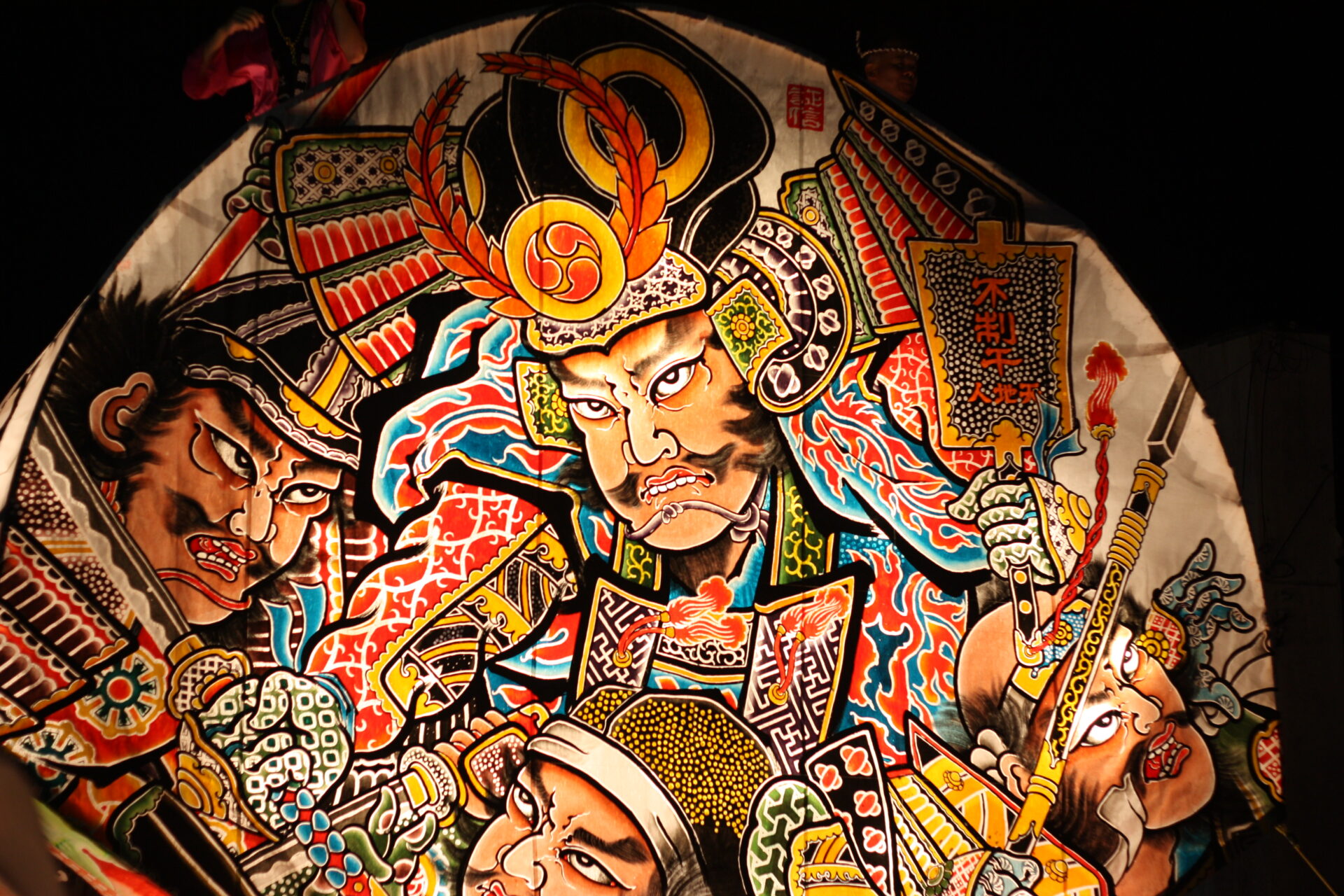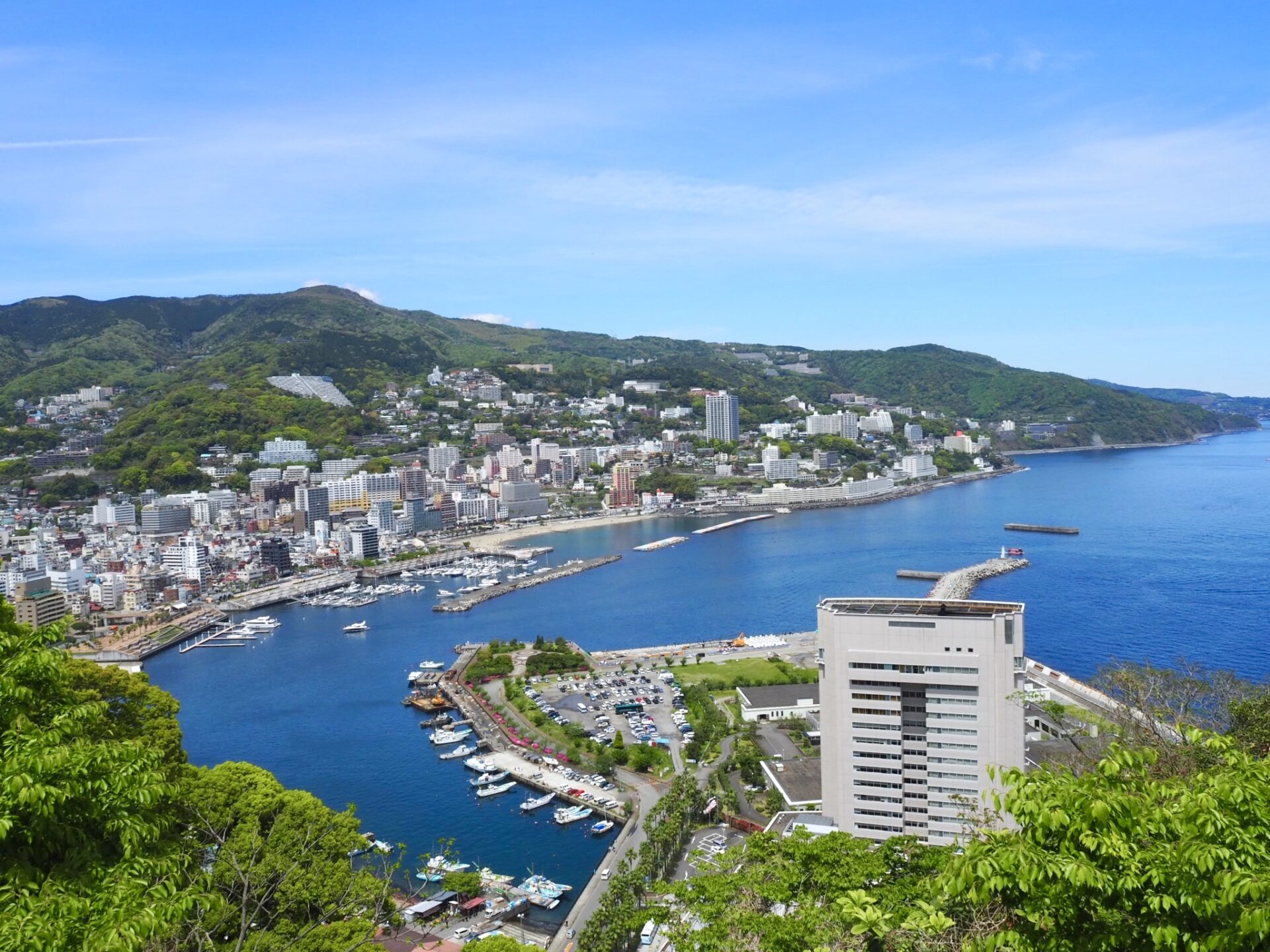Festivals in Japan tend to be vibrant, lively and often very colorful. Traditional Japanese festivals, also called matsuri, take place in spring, summer, autumn and winter, so no matter when you travel to Japan, you will always be able to catch one if you plan your visit well. Each matsuri has its own unique story that often features local mythology or a historical event. Here, we will introduce the most exciting matsuri of the lesser-traveled northeastern region of Japan called Tohoku, also known as Tohoku’s Three Great Festivals: the Nebuta Festival in Aomori, the Kanto Festival in Akita and the Tanabata Festival in Sendai.
1. Nebuta Festival (Aomori)
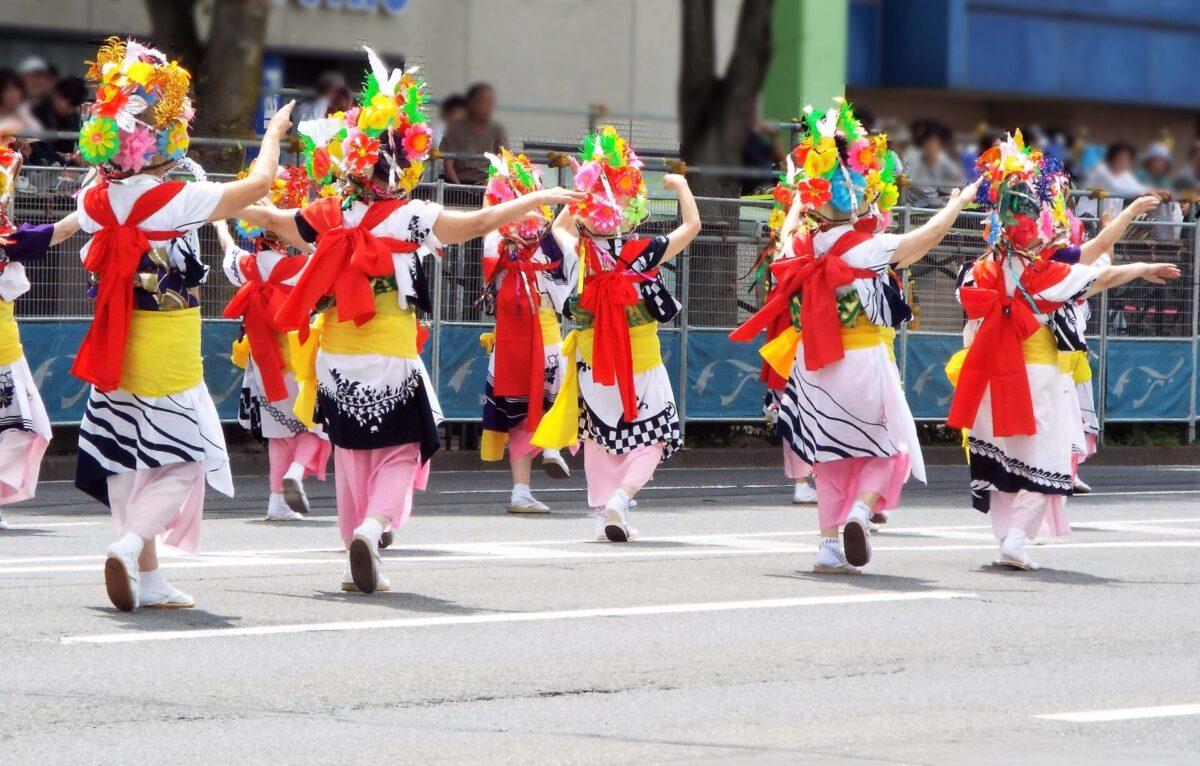
Every year on August 2-7, the colorful Nebuta Festival shrouds the streets of Aomori with its lively and dramatic atmosphere. For centuries, a festival involving a parade of huge lanterns has been held in the region, but the exact origin is unclear. One theory is that a military leader from the Heian Period liked to attract his enemies’ attention with the sound of flutes and taiko drums, but it is more likely that the festival evolved from Shinto rituals stemming from the Tanabata Festival. This matsuri is a fusion between ancient Chinese traditions and local customs. Once paper, bamboo and candles became widely available for commoners, people started carrying lanterns which each year grew bigger and bigger in size until they looked like what we know as Nebuta floats today.
Highlights of the Nebuta Festival
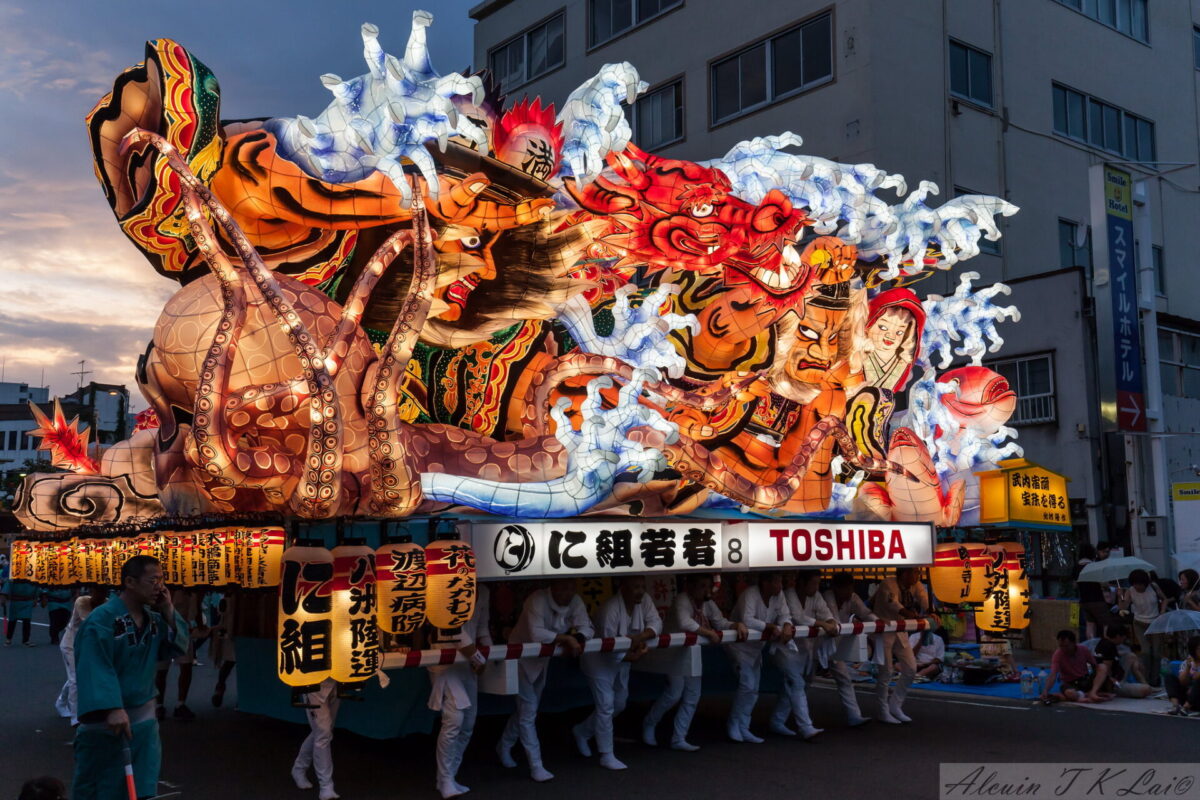
On August 2-6 there are nightly parades starting around 7 pm, and on August 7 there is a children’s parade from 1 pm to 3 pm, followed by a fireworks display from 7:15 pm to 9 pm. The nightly parades are what makes this festival famous as this is when the Nebuta floats are being carried through town. The Nebuta are huge depictions of fear-inducing warriors, demons and dragons, along with other mythical beings. They are made by Nebuta masters who work on them for a full year, and the festival is the masters’ time to finally show off their work.
The music is also an important part of the atmosphere of the Nebuta festival as specialist groups of musicians play drums and cymbals to set the rhythm and traditional flutes for the melodies. Finally, the festivities are completed by the Haneto dancers: wearing colorful costumes they dance energetically and whirl down the streets to the beat of the music. And the good news is that as long as you apply beforehand and wear a Haneto costume, anyone can be a Haneto dancer!
How to take part in the Nebuta Festival
The festival takes place in the center of Aomori City near JR Aomori Station. If you would just like to take part in the festival as a spectator, you can buy a ticket for reserved seating at a premium seat along the route. Alternatively, you can simply watch the procession from other spots, but it is important to note that it can get very crowded at this popular event.
For those who would like to dance along as Haneto dancers, you can simply join the parade as long as you are dressed in the proper costume. However, as long as COVID-19 countermeasures are still in place, you will have to book your spot in advance.
2. Kanto Festival (Akita)

Since the middle of the Edo Period, thousands of lanterns have been lighting up the balmy summer nights between August 3 and 7 in Akita during the Kanto Festival. Bamboo poles (kanto) decorated with lanterns to resemble ears of rice are carried around at this atmospheric festival to cast out evil spirits and pray for bountiful harvests in the fall.
Highlights of the Kanto Festival
The Kanto Festival is divided between a daytime and an evening event. The daytime event starts at 9 am and ends around 3:40 pm, and at this event strength competitions are held between groups and individuals to determine who is the best kanto bearer.
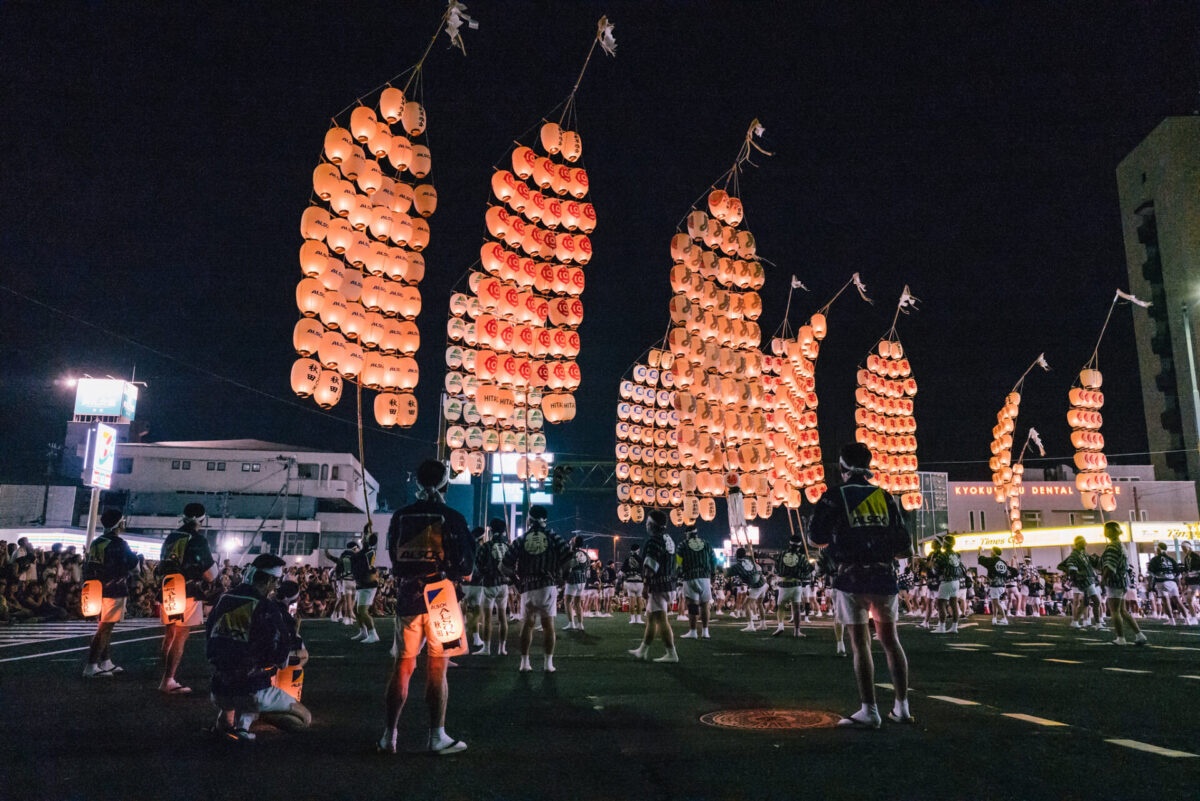
In the evening from 6:50 pm until around 9 pm, 280 kanto, made of bamboo and decorated with dozens of lit-up rice paper lanterns each, are carried around the city with great skill. The heaviest kanto poles weigh around 50 kg and are 12 meters tall, so you can imagine how much practice goes into being able to carry one on the palm of your hand, shoulder, forehead or lower back, let alone transferring the pole from one spot to another in an elegant and graceful manner. There are lighter versions as well that aren’t as long and heavy. Kanto bearers perform in groups and show off their skills by balancing the kanto on various parts of the body.
The sight of the impressive parade with thousands of swaying lanterns accompanied by the sound of traditional flutes creates a magical atmosphere that you will never forget!
How to take part in the Kanto Festival
Most visitors are especially interested in the evening event. If you’d like to watch this beautiful spectacle, you can head to the event space on any evening between August 3 and 6. Make sure to arrive early to get a good viewing spot, it can get very crowded so it’s a good idea to get there before 6 pm.
Address (daytime event): Nigiwai Hiroba, Nakaichi Area (1-4-1 Nakadori) in Akita City
Address (evening event): Sanno Cross Junction to Nichome-bashi in Akita City
3. Tanabata Festival (Sendai)

While the Tanabata Festival is celebrated throughout Japan, Sendai is the place to go if you want to immerse yourself in a very colorful matsuri that is based on this particular tradition. Tanabata decorations pop up all over Japan around July 7, but the Sendai festival takes place from August 6 to 8. It has been celebrated like this since the first lord, Date Masamune, took his seat in the Sendai domain in the early 17th century. The story behind the festival is a bit of a tear-jerker, as the century-old Tanabata fairytale, which originated in ancient China, is about two star-crossed lovers that were punished by the universe and sentenced to suffer eternal separation. Once a year, however, they were allowed to meet by crossing the Milky Way, and Tanabata is the time when this romantic meet-up is happening. Nowadays, it’s a time when children make a wish, write it down and hang it as a banner on a Tanabata decoration to pray for it to come true.
Highlights of the Tanabata Festival

During the special time of the Sendai Tanabata Festival, the whole city is adorned with vivid Tanabata decorations, a sight so impressive that millions of tourists flock to the city just to see it up close. You can find the decorations everywhere in the city center, including most larger shopping malls.
Besides the streamers, there are all kinds of festivities going on in Sendai including street performances, live music, traditional dance and Japanese food vendors.
How to take part in the Tanabata Festival
Simply get off the train at JR Sendai Station and head for the nearby Ichibancho and Chuo shopping arcades to see the decorations. Events can be found in the Shimin Hiroba Square and Kotodai Park which are located at the end of the Ichibancho shopping street. Walk down Jozenji Dori street towards the river from Shimin Hiroba Square to see even more events.
All of these festivals are vibrant, colorful and lively, making them extremely popular with locals and visitors alike. If you’re lucky enough to be in one of these cities while the festivals are taking place, we definitely recommend checking them out. If there is a special event or activity you absolutely don’t want to miss while you are traveling in Japan, consider working with a reservation service to consolidate your plans before you arrive.
Japan Wonder Travel Tours
Japan Wonder Travel is a travel agency that offers guided tours throughout Japan.
From private walking tours to delicious Food and Drink tours, we can help you organize the best tours just for you! If you want to explore Japan and learn more about the history and backstories of each area you are visiting, our knowledgeable and friendly English speaking guides will happily take you to the best spots!
In addition, we can provide you with any assistance you may need for your upcoming trip to Japan, so please feel free to contact us if yu have any questions or need some help!
▶Tokyo Tsukiji Fish Market Food and Drink Tour
Explore the most lively and popular fish market in Tokyo and try some of the local’s favorite street foods and sake with one of our friendly and knowledgeable English speaking guides!

▶Tokyo 1–Day Highlights Private Walking Tour (8 Hours)
There’s no better way to explore an area than taking a tour with a knowledgeable local guide. You will have the chance to learn about the history and interesting background stories of Tokyo, as well as discover some hidden gems which can be hard to do without a guide.

▶Mt. Fuji Day Trip Bus Tour from Tokyo
Experience the breathtaking views of Mt. Fuji by visiting the highlights of the area on our guided sightseeing bus tour! Departing from Shinjuku in central Tokyo, you can travel comfortably to all of the best spots in the area by bus.

Follow us on Instagram, Facebook, and Twitter for more travel inspiration. Or tag us to get featured!
Happy traveling!
Other articles you might be interested in

Stefanie Akkerman moved from the Netherlands to Japan in 2013 with her Japanese husband and son. She jumped into the niche of Dutch tour guiding in Tokyo and Kamakura in 2015 and occasionally writes articles about all the great sights and activities Japan has to offer. She loves (Japanese) food, and to work that all off she goes diving, snorkeling, cycling, or hiking.
This post may contain some affiliate links. When you click through and make a purchase we may receive some commission, at no extra cost to you.
